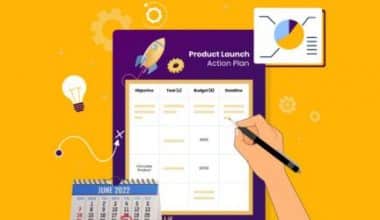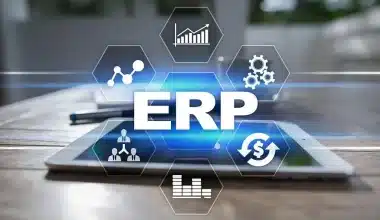Vendor management can also refer to online resources that compile all vendor data and associated activities for easy access by the organization. Software for vendor or supplier management can perform various tasks, such as managing the RFP procedure and improving supplier communications. Here in this article, is all the necessary information you will be needing for vendor management.
What is Vendor Management
The word “vendor management” refers to the procedures that businesses employ to manage their suppliers, also referred to as vendors. Selecting suppliers, negotiating contracts, controlling prices, lowering vendor-related risks, and assuring service delivery are all part of vendor management.
Depending on the nature of the organization, a corporation may hire vendors from a wide range of industries, such as cleaners, marketing consultants, IT vendors, and seafood suppliers. Vendors might be small businesses or very large corporations.
Why is Vendor Management Crucial
For several reasons, vendor management is crucial. One of the most important factors in choosing the best vendor for a specific business need is vendor management. Additionally, businesses can employ vendor management to accomplish their objectives, including maximizing cost-saving potential and accelerating the onboarding procedure.
In order to lower the risk of supply chain disruption and guarantee, the given goods and services are delivered on time and to the required standard, vendors must also be managed properly. Beyond this, a strong vendor management strategy can aid businesses in forging closer links with their suppliers, which may present chances to bargain for lower prices.
Vendor Management Job Description
Various actions are included in the vendor management process, including:
#1. Selection
The selection of vendors is one of the many operations that make up the vendor management process. Requests for quotations (RFQs) and requests for proposals (RFPs) are used to get quotes from potential vendors. Shortlisting and choosing vendors are also steps in the vendor selection process. Price will undoubtedly be taken into account during the selection process. But businesses will also need to consider other aspects such as a vendor’s reputation, capability, and track record. Also the vendor’s effectiveness in communicating when choosing which vendors to appoint for a specific contract.
#2. Negotiation
Negotiation of a contract. It’s crucial to draft a contract correctly at the outset and make sure the parameters agreed upon are advantageous to both parties. Defining the goods or services that will be covered, the start and end dates of the arrangements, and all crucial terms and conditions are all steps in the lengthy process of contract negotiation. It might also be necessary to pay attention to things like confidentiality and non-compete restrictions.
#3. Incorporating a Vendor
This entails assembling the paperwork and data required to establish the vendor as an authorized supplier to the business. Also, make sure that the vendor can be compensated for the products or services they deliver. The onboarding procedure may contain information such as relevant licenses held by the vendor, as well as tax forms and insurance details, in addition to necessary contact and payment information.
#4. Tracking the Performance
Companies will track and assess their vendors’ performance as part of the vendor management process. This can entail assessing their performance in relation to key performance indicators (KPIs) like product quality and quantity or delivery dates.
#5. Managing and Monitoring Risk
Risks that might have an effect on the business, such as the danger of lawsuits, data security concerns, compliance violations, and the theft of intellectual property, should be kept an eye on by vendors. Businesses must also keep an eye on the possibility that a vendor’s conduct or failure to provide the goods and services on time may cause disruptions in business operations.
Payment. ensuring that vendors receive prompt payment for the products and services they deliver in accordance with the terms set forth.
Problems with Vendor Management
Gaining a centralized picture of the vendors a firm uses can be challenging for businesses with a sizable supplier network and/or a complicated geographic footprint. Obtaining the appropriate documents from suppliers and conducting the necessary risk assessments are both difficult steps in the vendor management process. To prevent problems, it’s crucial to employ the right procedures and equipment.
To ensure vendor relationships deliver the intended value with effective processes, businesses may use a vendor management strategy. A plan may cover topics including establishing specific, measurable goals, monitoring KPIs, and establishing and upholding strong relationships with vendors. In order to identify their strategic vendors and make investments in fostering such relationships, businesses may also categorize their suppliers. Other factors can include taking precautions to prevent becoming overly dependent on a specific vendor.
Vendor Management Inventory
Vendor-management inventory is a collection of processes and inventory management software wherein a manufacturer, who’s also a supplier, takes up the job of improving the distributor’s inventory inventories.
Vendor Managed Inventory Software System
You can fill orders more quickly and efficiently by using vendor-controlled inventory systems, sometimes referred to as supplier-assisted inventory replenishment or continuous replenishment programs.
In this type of system, both parties share data to help achieve better order accuracy. However, vendors are entitled to inform and educate employees and associates about their inventory and its use.
Here are a few vendor management inventory to talk about:
#1. Key Features
For a business, choosing software with the best features might be intimidating. When using a certain solution for the first time, this may seem even more frightening.
We’ve compiled a list of required requirements for a VMI solution to make the process easier. You can also search for extra skills that perfectly match the needs of your company.
#2. Demand Prediction
One of the crucial skills that VMI solutions provide is accurate demand forecasting for commodities. They provide demand forecasting for effective product assembly, manufacturing, and delivery.
It supports supply chain planning supported by insights by coordinating the data of individual units from numerous businesses that make up your customer base. Additionally, the program assists you in locating underperforming stock-keeping systems and preventing overstocking your warehouse or retail space.
#3. Inventory Control
You can efficiently track data for the goods that your company creates, stores, buys or sells. Additionally, the program makes precise pricing possible and aids in maintaining optimal supply levels. Serial and lot tracking features should be included in a suitable vendor-managed inventory system.
#4. Data Transfer
Easy data and document sharing between devices within a business or between clients, customers, and business partners are supported by VMI solutions. This could consist of data on taxes and customs, inventory records, purchase orders, and receipts, shipping information, and more.
#5. Integration of E-commerce
You can choose a VMI solution that works with popular eCommerce platforms, shopping carts, and websites. Inventory levels, payment methods, including cash and digital, and shipping options will all be made more streamlined as a result.
Vendor Management System
A vendor management system, or VMS for short, is a software package that aids companies in managing their vendor relationships from the beginning of a contract through its completion, or even at the first stages of forming one.
Why is a Vendor Management System Necessary
Utilizing the best vendor management system enables you to maximize your supplier connection. Vendor management is essential to the success of any procurement team. A vendor management solution like Kissflow Procurement Cloud has many advantages, from supplier qualification to onboarding to enabling them to create & manage catalogs to capture supplier performance.
The following are some additional benefits of using a vendor management system.
- Successful vendor relationship management initiatives allow for the most efficient use of personnel and financial resources.
- timely provision of products and services
- Delivering consistent results helps you build stronger relationships with your customers. A vendor management system makes the end-to-end processes involved more efficient.
- Custom reports and KPIs let you assess vendor performance.
- None of this required manual labor.
- Improve the procurement procedure for the highest level of productivity
What is the Role of a Vendor Management?
Vendor managers negotiate contracts, establish criteria for the suppliers, and discover the best possible vendors in order to facilitate and sustain partnerships between your company and vendors/partners.
Who is Responsible for Vendor Management?
Senior Management is in charge of managing vendors, while the Board of Directors is in charge of managing vendor risk.
What are the Types of Vendor Management?
In addition to procurement, other management functions include vendor onboarding, vendor relationship management, vendor risk management, performance management, contract management, compliance management, and SLA management.
Is Vendor Management Part of HR?
A business discipline similar to human resource management, vendor management is used to manage your vendors rather than your employees. The goal of vendor management is to optimize the value of vendor relationships by approaching the entire process holistically and risk-based from start to finish.
What are Vendor Management Skills?
Vendor management abilities demonstrate your ability to plan and work with outside (product or service) sources. Your job would be to establish cooperative relationships with suppliers in order to transform a routine commercial transaction into a lasting collaboration.
What are the Four Stages of Managing a Vendor?
#1. Assess
The first stage, Assess, involves assessing the state of the data management process at the moment and the demands that go along with it. This crucial step enables the institution to comprehend the problems that will need to be fixed.
#2. Sterilize
In the second step, sterilize, duplicate data is removed, missing data is found, erroneous data is corrected, inactive or obsolete accounts are deleted, and new process rules are developed. As it involves the most thorough analysis of the data and calls for the most “corrective” action, sterilization is one of the processes of the process that takes the longest.
#3. Stabilize
Outlining the standards, finishing vendor profiles, and recording responsibilities both inside and outside of the vendor management system are all parts of the third step, stabilization. Stabilization offers a standardized and consistent method and puts in place standards that will maintain a better process going forward.
#4. Optimize
The fourth and last step, Optimize, concentrates on vendor self-service, reducing fraud and hazards, and a continuous process for data validation. The culmination of the first three processes, optimization makes sure the process is operating at its best.
Conclusion
Vendor data management generally calls for numerous departments and stakeholders to work successfully together in order to ensure a smooth process, as is the case with many procurement operations. Since vendor data is dynamic, merely evaluating and sterilizing vendor records will not put an institution in a position to produce lasting, beneficial consequences. The right rules and processes must be in place, fully embraced through efficient change management, and updated as business requirements change. The institution will be better able to use data trends to successfully monitor operations like fraud prediction and strategic sourcing plans if vendor data is carefully managed.
Related Articles
- VENDOR MANAGEMENT SYSTEMS: Definition, Types, and Top Systems
- ACCOUNTS PAYABLE PROCESS: How to Manage the Process Effectively
- NET 30 VENDORS: Definition, How It Works with Example and List of Best Vendors
- 10 BEST ONLINE WHOLESALE VENDORS IN 2023
- SUPPLIER MANAGEMENT SYSTEMS: Process and Best Tools






